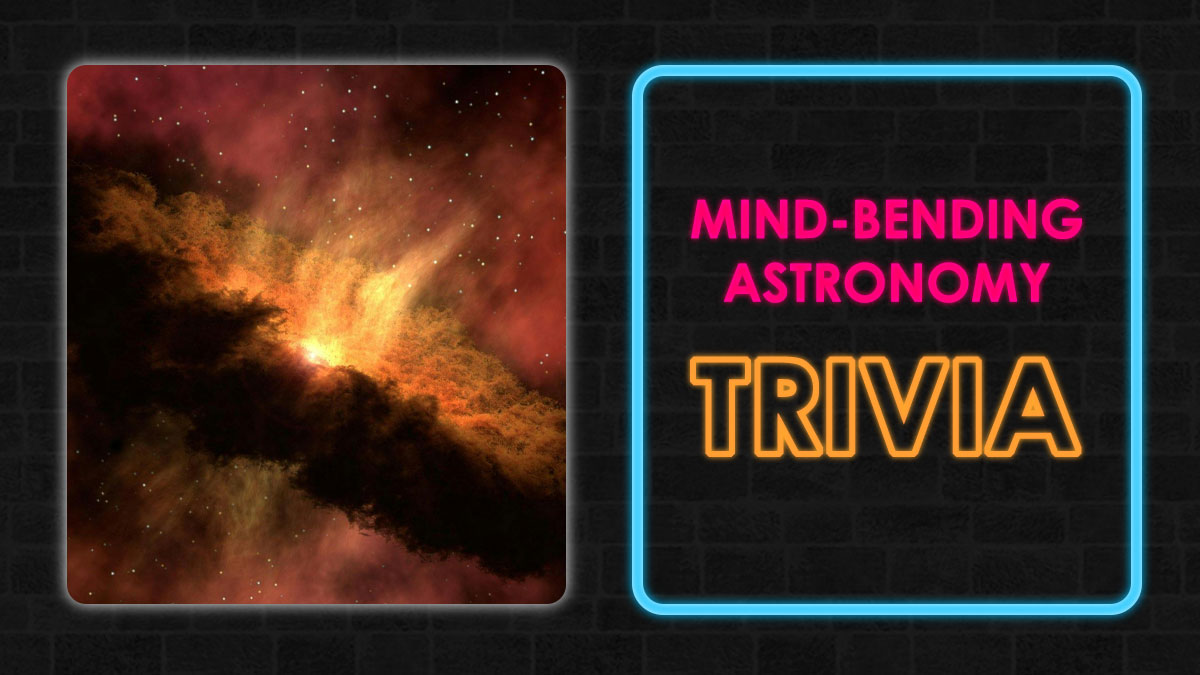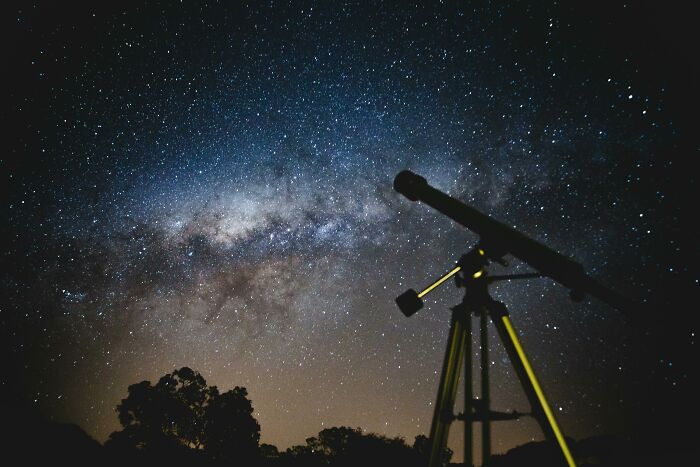Space has fascinated humanity for centuries – from the mystery of the stars to the groundbreaking discoveries that push the boundaries of our understanding. Whether you’re an armchair astronomer or a seasoned space enthusiast, the cosmos is full of wonders waiting to be explored.
In this trivia quiz, you’ll embark on a journey across planets, stars and galaxies to uncover the secrets of our universe.
So, are you ready to shoot for the stars and prove you’re a true cosmic explorer? Let’s dive in! 🚀
Image credits: Lucas Pezeta
•
Not Quite Done Yet!
Discover Your Competitive Edge
Subscribe Premium to Compare Your Stats with Others
More Premium features:
How did you score compared to others?
Your general stats:
| User | Result | Reward |
|---|---|---|
  | / 20 | |
  | / 20 | |

Sure, it's 93 million...wait, KILOMETERS?! Curse you, US education system!!!
Load More Replies...Extremely basic questions and I still fell for the Hubble one. At least only this one.
The vast majority of these were trivia in the same way that the name of the thing with two holes in the middle of your face is trivia. I got tripped up on distance to the sun because I didn't pay enough attention and answered in miles while wondering why all the choices were multiple of 50.
Load More Replies...When Voyager 1 was launched in 1977 it was expected to remain functional for no more than five years. Forty-seven years on and it's still sending back information.
Both Voyager 1 and 2 are now in interstellar space. Completely beyond the influence of our sun. Just absolutely incredible to think about.
Load More Replies...NASA: "The Hubble Space Telescope sees primarily visible light (indicated here by the rainbow), as well as some infrared and ultraviolet radiation. NASA", though it sees some UV and IR, but not all of it? 🤓🤓🤓 https://science.nasa.gov/wp-content/uploads/2023/04/spectrum1-jpg.webp?w=1024&format=webp
19/20 just missed the shortest day question. Got thrown for a loop by the sun distance question, being American I don't metric very well, but I did know the distance in miles so I made a guess :-)
I looked up to see how far away Voyager I was, 25 billion km after 47 years flight. The nearest star is 40 trillion km away.
I don't know why you're being downvoted, you're right. https://science.nasa.gov/mission/voyager/where-are-voyager-1-and-voyager-2-now/ https://science.nasa.gov/mission/voyager/frequently-asked-questions/
Load More Replies...19/20 I got Proxima Centuri wrong thinking Alpha was Alpha Centuri
18/20. Got the shortest day question wrong, and the distance to the sun. Shortest day was a shot in the dark guess for me. And the distance to the sun I guessed 100. I think my brain remembered the number of miles but forgot the units. At least, that's the excuse I'm going to go with 😂
I would like to nitpick that "dwarf planet" is still a planet. It's right there in the name. Along with a few other dwarf planets.
Damn, only got the distance to the sun wrong - Honest mistake ¯\_(ツ)_/¯ (Can we get a Nerd edition of this quiz?)
Sure, it's 93 million...wait, KILOMETERS?! Curse you, US education system!!!
Load More Replies...Extremely basic questions and I still fell for the Hubble one. At least only this one.
The vast majority of these were trivia in the same way that the name of the thing with two holes in the middle of your face is trivia. I got tripped up on distance to the sun because I didn't pay enough attention and answered in miles while wondering why all the choices were multiple of 50.
Load More Replies...When Voyager 1 was launched in 1977 it was expected to remain functional for no more than five years. Forty-seven years on and it's still sending back information.
Both Voyager 1 and 2 are now in interstellar space. Completely beyond the influence of our sun. Just absolutely incredible to think about.
Load More Replies...NASA: "The Hubble Space Telescope sees primarily visible light (indicated here by the rainbow), as well as some infrared and ultraviolet radiation. NASA", though it sees some UV and IR, but not all of it? 🤓🤓🤓 https://science.nasa.gov/wp-content/uploads/2023/04/spectrum1-jpg.webp?w=1024&format=webp
19/20 just missed the shortest day question. Got thrown for a loop by the sun distance question, being American I don't metric very well, but I did know the distance in miles so I made a guess :-)
I looked up to see how far away Voyager I was, 25 billion km after 47 years flight. The nearest star is 40 trillion km away.
I don't know why you're being downvoted, you're right. https://science.nasa.gov/mission/voyager/where-are-voyager-1-and-voyager-2-now/ https://science.nasa.gov/mission/voyager/frequently-asked-questions/
Load More Replies...19/20 I got Proxima Centuri wrong thinking Alpha was Alpha Centuri
18/20. Got the shortest day question wrong, and the distance to the sun. Shortest day was a shot in the dark guess for me. And the distance to the sun I guessed 100. I think my brain remembered the number of miles but forgot the units. At least, that's the excuse I'm going to go with 😂
I would like to nitpick that "dwarf planet" is still a planet. It's right there in the name. Along with a few other dwarf planets.
Damn, only got the distance to the sun wrong - Honest mistake ¯\_(ツ)_/¯ (Can we get a Nerd edition of this quiz?)

 Dark Mode
Dark Mode 

 No fees, cancel anytime
No fees, cancel anytime 




















































31
47